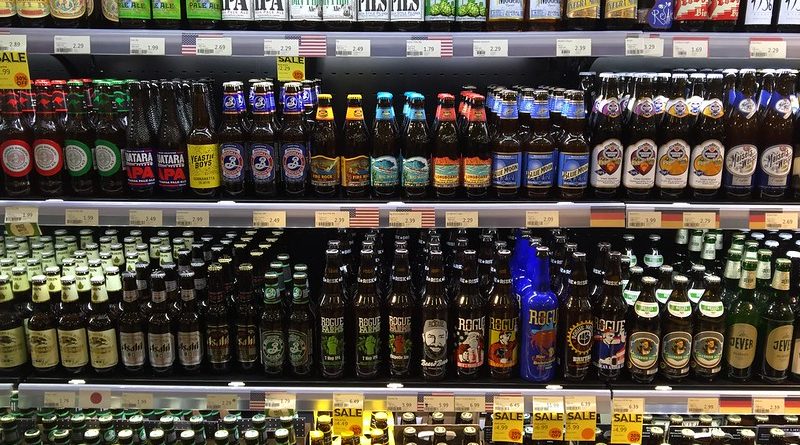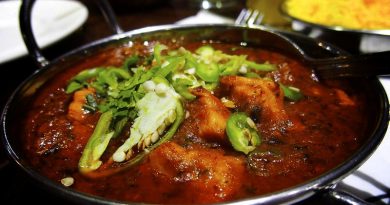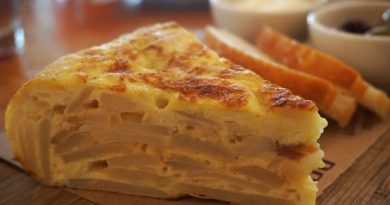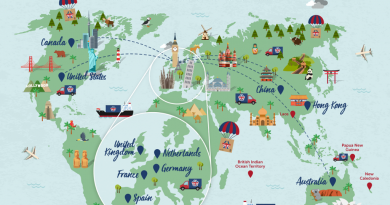A Short History Of Beer
Many anthropologists and archaeologists now believe that it was a taste for beer, not bread that started people farming barley around 9000 BC. Known as the agricultural revolution, it ended hunter-gathering and led to the world’s first ever civilization – Mesopotamia.
10,000 BC – 5,000 BC: Beer is first discovered, and perhaps responsible for the formation of society.
4000 BC: In the Middle East the Sumer people were fermenting a form of bread to make a fermented pulp which had an intoxicating effect – a “divine drink”.
3,000 BC – 500 BC: Ancient Egyptians drank beer daily, and it was often prescribed as Medicine. The Babylonians had up to 20 different types of beer. The early beer was cloudy and unfiltered and was usually drunk through a straw to avoid drinking the solids from the brew, which could be very bitter. Beer also featured in wedding traditions. The father of the bride made a Beer Month for the bridegroom during the first month after the wedding. This means that the newly married man could drink beer chock-full at his father-in-law’s expense.
2000 BC: Beer was commonly drunk because it is more nutritious than bread and less likely to contain harmful pathogens than drinking water, which can make you ill. During harvest, instead of payment, participants are rewarded with a special feast, often involving quantities of alcohol, which also transformed the work from a chore into a social event. The people of the Bronze Age, it seems, were well aware of the relaxing properties of alcohol.
1772 BC: Hammurabi’s Code regulates daily rations of beer depending on status.
1550 BC: The Egyptians were also keen brewers and beer and malt has been found buried in the tombs of the Pharoahs to provide sustenance for the afterlife.
100 AD: Beer was extensively drunk throughout the Roman Empire. The Romans preferred wine and introduced grapes into much of the Southern part of the Empire including the South of England. The local inhabitants tended to drink beer. Beer from this time had to be consumed fresh, was served cloudy and would have produced little or no foam. To aid its taste and keeping properties bitter herbs and spices may have been used.
The Middle Ages: In the Middle Ages the largest brewers were the monasteries. The refreshing beer made a welcome break in a very austere lifestyle and could still be enjoyed during times of fasting. Monks soon acquired a taste for ale and records show that in some monasteries consumption up to five litres a day was allowed.
- 800 AD:Hops are first used to flavour beer. The first recorded use of hops in beer dates back to 822AD in Northern France, but it wasn’t for another 300 years that Germany caught on and it only became commonplace in the 13thcentury. The addition of hops slowly spread throughout Europe, reaching Britain by the middle of the 15th century. Before people used hops to flavour beer, they used spices and herbs – a mixture known as gruit.
- 1300:Beer shifts commercial production from home sin to pubs and monasteries.
1516 Medieval Germans nearly ruined beer forever. The world’s first food ingredient regulation is the Reinheitsgebot German Purity Law and extended to the whole of Bavaria in 1516. It later included the rest of Germany. The law stipulated that beer could only be brewed from water, hops and malt (the use of yeast was not yet known). This created a very bland lager.
Beer In Early European History
By the 14th and 15th centuries, beer-making was gradually changing from a family-oriented activity to an artisan one, with pubs and monasteries brewing their own beer for mass consumption.
In 15th century England, an unhopped beer would have been known as an ale, while the use of hops would make it a beer. Hopped beer was imported to England from the Netherlands as early as 1400 in Winchester, and hops were being planted on the island by 1428. The popularity of hops was at first mixed — the Brewers Company of London went so far as to state “no hops, herbs, or other like thing be put into any ale or liquor wherof ale shall be made — but only liquor (water), malt, and yeast.” However, by the 16th century, “ale” had come to refer to any strong beer, and all ales and beers were hopped.
In 1516, William IV, Duke of Bavaria, adopted the Reinheitsgebot (purity law), perhaps the oldest food regulation still in use today. The Gebot ordered that the ingredients of beer be restricted to water, barley, and hops, with yeast added after Louis Pasteur’s discovery in 1857. The Bavarian law was applied throughout Germany as part of the 1871 German unification as the German Empire under Otto von Bismarck, and has since been updated to reflect modern trends in beer brewing. To this day, the Gebot is considered a mark of purity in beers, although this is controversial.
Most beers until relatively recent times were what are now called ales. Lagers were discovered by accident in the 16th century after beer was stored in cool caverns for long periods; they have since largely outpaced ales in terms of volume.
The Caledonian Brewery, Scotland
Beer During The Industrial Revolution
With the invention of the steam engine in 1765, industrialization of beer became a reality. Further innovations in the brewing process came about with the introduction of the thermometer and hydrometer in the 19th century, which allowed brewmasters to increase efficiency and attenuation.
Prior to the late 18th century, malt was primarily dried over fires made from wood, charcoal, or straw, and after 1600, from coke.
In general, none of these early malts would have been well shielded from the smoke involved in the kilning process, and consequently, early beers would have had a smoky component to their flavors; evidence indicates that maltsters and brewers constantly tried to minimize the smokiness of the finished beer.
Writers of the period describe the distinctive taste derived from wood-smoked malts, and the almost universal revulsion it engendered. The smoked beers and ales of the West Country were famous for being undrinkable – locals and the desperate excepted. This is from “Directions for Brewing Malt Liquors” (1700):
“In most parts of the West, their malt is so stenched with the Smoak of the Wood, with which ’tis dryed, that no Stranger can endure it, though the inhabitants, who are familiarized to it, can swallow it as the Hollanders do their thick Black Beer Brewed with Buck Wheat.”
So, a bit of an acquired taste, then. Here’s an even earlier reference to such malt by William Harrison, in his “Description of England”, 1577:
“In some places it [malt] is dried at leisure with wood alone, or straw alone, in other with wood and straw together, but, of all, the straw-dried is the most excellent. For the wood-dried malt, when it is brewed, beside that the drink is higher of colour, it doth hurt and annoy the head of him that is not used thereto, because of the smoke. Such also as use both indifferently do bark, cleave, and dry their wood in an oven, thereby to remove all moisture that should procure the fume…”
Not exactly an unequivocal endorsement. Here’s what “London and Country Brewer” (1736) has to say:
“Brown Malts are dryed with Straw, Wood and Fern, etc.The straw-dryed is the best, but the wood sort has a most unnatural Taste, that few can bear with, but the necessitous, and those that are accustomed to its strong smoaky tang; yet it is much used in some of the Western Parts of England, and many thousand Quarters of this malt has been formerly used in London for brewing the Butt-keeoing-beers with, and that because it sold for two shillings per Quarter cheaper than Straw-dryed Malt, nor was this Quality of the Wood-dryed Malt much regarded by some of its Brewers, for that its ill Taste is lost in nine or twelve Months, by the Age of the Beer, and the strength of the great Quantity of Hops that were used in its preservation.”
Wood-dried malt had a horrible taste, but some London brewers did once use it because it was cheap and after long aging in a heavily-hopped beer you didn’t notice the vile smokiness any more.
However, the straw-dried brown malt preferred in London was the least affected. That was the very reason it was valued above the wood-dried variety. In “Town and Country Brewery Book” (approx. 1830, p.47), there is a chapter about what can go wrong during malting. Smoking malt was seen as a serious mistake:
“The third error consists in the drying of malt. They are apt to be tainted by the smoke, through the carelessness, covetousness, or unskilfulness of the maker. Every care ought to be taken to guard against this accident as one of the most prejudicial that can befall malt drinks.”
The hydrometer transformed how beer was brewed. Before its introduction beers were brewed from a single malt: brown beers from brown malt, amber beers from amber malt, pale beers from pale malt. Using the hydrometer, brewers could calculate the yield from different malts. They observed that pale malt, though more expensive, yielded far more fermentable material than cheaper malts. For example, brown malt (used for Porter) gave 54 pounds of extract per quarter, whilst pale malt gave 80 pounds. Once this was known, brewers switched to using mostly pale malt for all beers supplemented with a small quantity of highly-coloured malt to achieve the correct colour for darker beers.
The invention of the drum roaster in 1817 by Daniel Wheeler allowed for the creation of very dark, roasted malts, contributing to the flavour of porters and stouts. Its development was prompted by a British law of 1816 forbidding the use of any ingredients other than malt and hops. Porter brewers, employing a predominantly pale malt grist, urgently needed a legal colourant. Wheeler’s patent malt was the solution.
The discovery of yeast’s role in fermentation in 1857 by Louis Pasteur gave brewers methods to prevent the souring of beer by undesirable microorganisms.
The Free Mash Tun Act 1880: Malt was first taxed in Britain in 1660, and the legislation prohibited the use of other cereals in brewing. The repeal followed a bad barley harvest and pressure from the colonial sugar growers to allow sugar cane to be used in the beer. The new law enabled “the brewer to brew from what he pleases and have a perfect choice of his materials and methods”. The predominant beers of the day were dark quite sweet and malty – and often served at different alcoholic strength – strong ale, medium ale and weak ale made from different extracts of the same brew.
Without beer there would have been no Napoleonic Wars as beer was the first commodity to be taxed – principally to fund the British Empire. By the 18th & 19th centuries the British government concentrated the industry into big London breweries, primarily for ease of tax collection.
Bottling beer in a modern facility, 1945, Australia
Modern Beer
Prior to Prohibition, there were thousands of breweries in the United States, mostly brewing heavier, European-style beers. Beginning in 1920, most of these breweries went out of business, although some converted to soft drinks and other businesses. Bootlegged beer was often watered down to increase profits, beginning a trend, still on-going today, of the American palate preferring lighter beers. Consolidation of breweries and the application of industrial quality control standards have led to the mass-production and the mass-marketing of huge quantities of light lagers. Smaller breweries, including microbreweries and craft brewers, and imports, have serviced the segment of the American market that prefers fuller-bodied beers.
More information:




